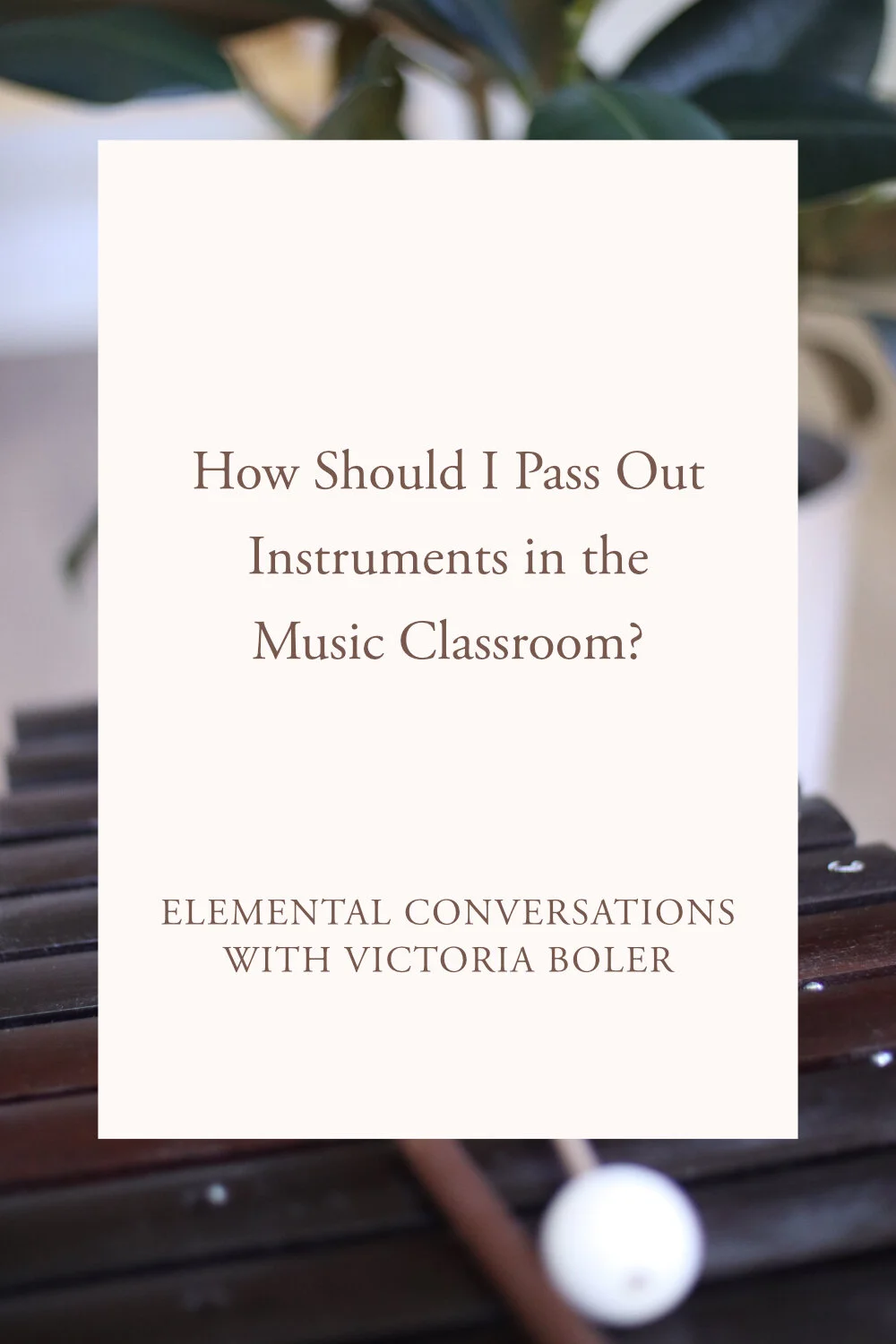“Hi Victoria! I’d love to hear more about some strategies you have for classroom setup of barred instruments or unpitched percussion. My students are new to barred instruments but they've had many experiences practicing both rhythm and pitch concepts in our class, so I'd love to then transfer that over to the instruments. I’d love to hear about some strategies you have for taking out the instruments and setting them up in a way that's time-efficient. That would be wonderful, thank you!”
Guiding Questions
What do students do in your music classroom? How can the setup serve the function?
How are we using the instruments? What’s the role of the instruments - accompaniment to the ensemble, or the ensemble itself?
How often are we using the instruments?
Does everyone need an instrument? Does everyone need an instrument every class?
The purpose of the activity will dictate the setup of your classroom and it can impact how you choose to facilitate instrument distributions.
Unpitched Percussion Storage:
Storage: Ikea bins or tubs organized by family
Easy to move around the room before and after class, and during centers
Tubanos, djembes, standing drums are out away from the door traffic if possible
Pitched Percussion Storage:
Stacking
Floor tape
In an arc
Lower pitch in the back, higher pitches toward the front
Movement in the center, barred instruments away from the door around the perimeter of the room
If possible, keep a few instruments out all the time
Classroom Transitions
How we move from activities, procedures within an activity, or class to class
Eliminate empty space where students don’t have a direction
How can I add music in between point A and point B? What will students be doing as we move from point A to point B?
Where am I trying to go? What’s the point? What will students do?
Transition Ideas
Unpitched percussion is often logistically easier than barred instruments (less expensive and smaller)
The teacher passes them out:
While students are doing something else like playing a game
Bee Bee Bumblebee - students play the game while you walk around and put instruments behind them
Teacher passes them out to every other student
Check for readiness
Older students working on a stick tossing game or hand clapping game that will move to rhythm sticks - Students work in partners and practice hand clapping. When they’re ready for the teacher to watch they give a thumbs up. The teacher watches and then hands rhythm sticks or motions for the partners to go get rhythm sticks
Small groups practice their compositions and notate body percussion. When they’re ready to move on, they give the teacher a thumbs up and perform their composition. If they’re ready, the teacher motions for them to get an instrument
Small groups practice singing and signing solfege to the melody of a known song. When they’re ready for the teacher to watch they give a thumbs up. The teacher watches and motions for one student to bring a barred instrument back for students to play the melody
Students put them away:
One partner walks to the Ikea bins or labeled instrument tubs and puts away the unpitched percussion
The person in the group who got the barred instrument is the one to place it back on the floor tape
The teacher picks them up:
As the activity happens: Students speak the text while clapping the rhythm of the words, teacher walks around with the bin and keeps going around the circle. When students drop off the sticks they speak and clap
The pass off:
Students take turns at the instruments and pas off their mallets to new classmates
Plainsies Clapsies - A few students play the melody while others play the game. Those mallet players walk around the instruments and hand their mallets to a classmate. The mallet player takes the scarf, game player takes the mallets, and the game continues for another round
Part of a game:
In an elimination or counting out game, students move to an instrument when they are “out”
Ending activity / opening activity
As a transition from one class to the next in your daily schedule, end a class with an unpitched percussion activity. Students leave the instruments at their spots and go to line up. When the next class walks in, they do their rhythm activities on unpitched percussion instead of body percussion.
When we think strategically about how to keep musical activities and musical thinking moving through logistical setups, we’re thinking about classroom transitions. Those transitions are what make a music class woven together in a way that feels play-based, musical, and magical - both for us and for our students


